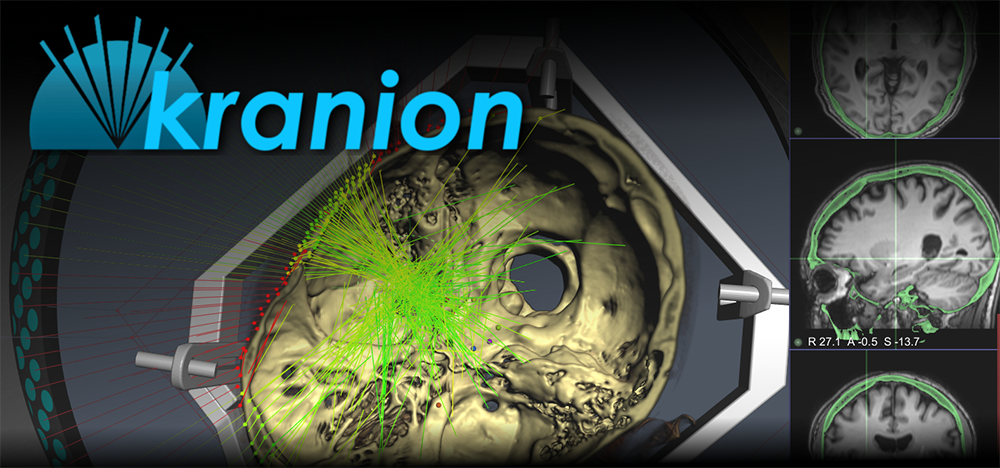In May 2018, Foundation scientists released Kranion®, a highly visual and interactive, open-source transcranial focused ultrasound modeling system for conducting research. Kranion® allows scientists to “see” how the paths of focused ultrasound’s invisible sound waves behave as they pass through the skull while aiming for a particular target in the brain.
Developed by the Foundation’s Brain Program Technical Director, John Snell, PhD, and a group of student interns, Kranion® imports MRI and CT images to plan and visualize hypothetical transcranial focused ultrasound procedures.
Since the software’s release, Snell and a group of researchers from the Center for Neuromodulation at The Ohio State University led by Vibhor Krishna, MD, ScM, have completed a study that aimed to validate Kranion’s performance. In the study, “Kranion, an Open-source Environment for Planning Transcranial Focused Ultrasound Surgery: Technical Note,” the group studied the relationship between skull parameters and treatment efficiency by analyzing CT images from 28 patients. They then used the data to create a metric, the “beam index,” to estimate temperature rise during focused ultrasound treatment. Can Kranion® accurately analyze a patient’s skull to help deliver more effective treatment? See the article in the Journal of Neurosurgery >
 Ongoing development of Kranion® aims to put tools into the hands of researchers, which will catalyze further development of brain treatment with focused ultrasound. Targeted research areas include patient selection, targeting accuracy and safety, feasibility of new indications, treatment planning workflow, and visualization of treatment monitoring and simulation results. Kranion® also enables the retrospective visualization and analysis of clinical treatments, which may allow researchers to mine important findings from the increasing volume of completed focused ultrasound procedures (the study referenced above is one such example). Ideally, Kranion® may serve as a tool for collaboration across research and clinical sites by providing a visual platform for sharing research findings and clinical experiences.
Ongoing development of Kranion® aims to put tools into the hands of researchers, which will catalyze further development of brain treatment with focused ultrasound. Targeted research areas include patient selection, targeting accuracy and safety, feasibility of new indications, treatment planning workflow, and visualization of treatment monitoring and simulation results. Kranion® also enables the retrospective visualization and analysis of clinical treatments, which may allow researchers to mine important findings from the increasing volume of completed focused ultrasound procedures (the study referenced above is one such example). Ideally, Kranion® may serve as a tool for collaboration across research and clinical sites by providing a visual platform for sharing research findings and clinical experiences.
Kranion’s code, downloadable files, and system requirements are now available as open source on the Foundation’s website.
Please note that Kranion® software is intended for research purposes only.
